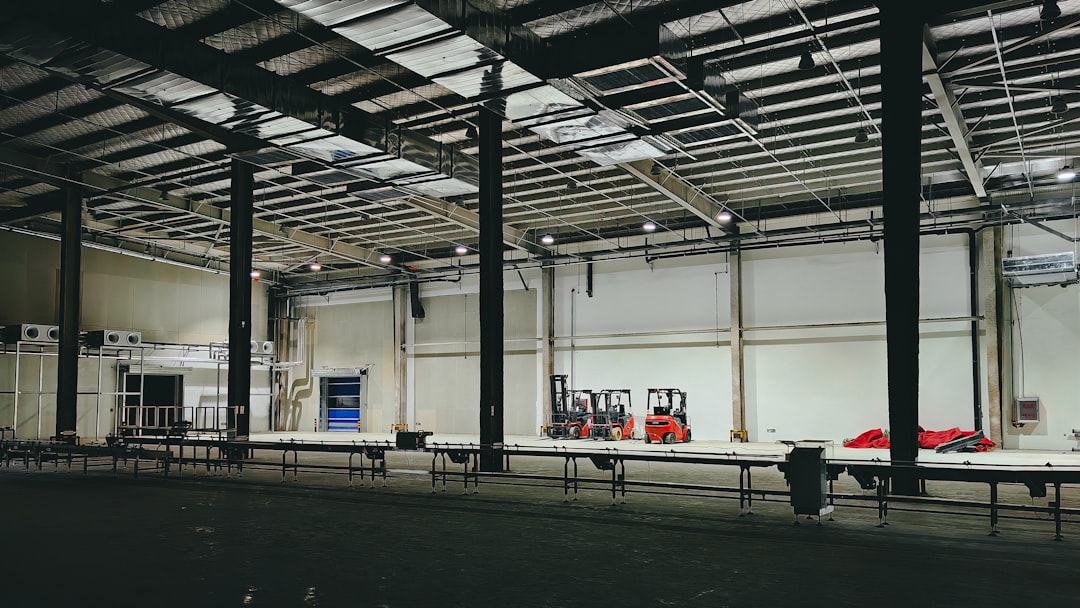As e-commerce and global supply chains continue to expand, warehouses are under increasing pressure to become faster, more efficient, and less prone to error. To meet these demands, businesses are integrating advanced technologies like inventory management robots into their operations. These robots are revolutionizing the logistics industry, making warehouses up to 55% more efficient and significantly reducing the risk of human error.
By automating various aspects of inventory control, these robots are not only accelerating fulfillment times but also enabling companies to manage stock with unprecedented accuracy. They are transforming traditional warehouse workflows, which were once heavily reliant on manual labor, into streamlined, data-driven operations.
What Are Inventory Management Robots?
Inventory management robots are intelligent machines designed to autonomously track, manage, and transport inventory within a warehouse. Equipped with sensors, cameras, AI algorithms, and machine learning capabilities, these robots can perform tasks such as:
- Stock counting
- Item retrieval
- Shelving and re-stocking
- Barcode scanning
- Real-time data collection
The use of such robots eliminates many of the repetitive and error-prone tasks typically handled by human workers, allowing them to focus on more complex responsibilities.
Boosting Warehouse Efficiency by 55%
One of the most striking benefits associated with the deployment of inventory robots is a reported 55% increase in efficiency. This boost is primarily a result of three core factors:
1. Faster Stock Cycle Times
Robots can move quickly and continuously throughout a warehouse, scanning multiple items in a fraction of the time it would take a human worker. This leads to faster stock counts and quicker order fulfillment cycles. Traditional manual inventory checks may happen weekly or monthly, but robots can verify stock nightly or even hourly.
2. Reduced Picking Time
Automated guided vehicles (AGVs) and autonomous mobile robots (AMRs) optimize item retrieval by calculating the shortest path through a warehouse. They can work 24/7 with minimal downtime, greatly reducing the time required for order picking.
3. Better Inventory Accuracy
By consistently scanning, logging, and tracking product movement in real time, these robots help maintain accurate inventory records. This ensures that products are exactly where the system says they are, minimizing lookup delays and backorders.
Drastically Lowering Human Error
Error is an inevitable part of any manual system. From misplacing inventory to recording incorrect counts, human mistakes can compound over time, resulting in costly inefficiencies. Robots help solve this problem by removing the fallibility of human oversight from the equation.
How Robots Reduce Error:
- AI-driven decision-making: Advanced algorithms help robots make data-backed choices instantly, reducing the chance of miscalculations.
- Consistent performance: Robots do not suffer from fatigue or distraction, leading to consistent and accurate work.
- Automated auditing: Regular, automated counts allow errors to be caught before they escalate, tightening overall inventory control.
Additional Benefits of Inventory Management Robots
Beyond efficiency and accuracy, inventory robots also provide a number of secondary advantages that further justify their implementation in modern warehouses:
- Labor cost savings: With robots managing repetitive tasks, companies can reduce operational costs or reassign human workers to higher-value roles.
- Improved safety: Fewer manual movements through the warehouse translates to fewer accidents or workplace injuries.
- Scalability: Robots can easily adapt to changing warehouse layouts or increased order volume without requiring retraining.
- Real-time analytics: Constant data collection enables advanced reporting and predictive analytics to improve future planning and forecasting.
Integration with Warehouse Management Systems (WMS)
Modern inventory robots integrate seamlessly with WMS software, synchronizing data in real time. This synchronization provides warehouse managers with an accurate, up-to-the-minute view of stock levels and locations. In turn, this transparency allows for more informed decision-making, reduces the likelihood of restocking errors, and improves customer service by ensuring that promised items are indeed in stock.
Case Studies and Industry Adoption
According to a recent study by LogisticsIQ, the warehouse automation market is projected to exceed $30 billion by 2026, with a significant portion of the growth attributed to the widespread adoption of robotics. Companies like Amazon, Walmart, and Alibaba are already using thousands of inventory robots to streamline operations in distribution centers worldwide.
For example, Amazon’s Kiva robots have reduced its average order fulfillment time from 90 minutes to under 15 minutes. Similarly, other companies deploying inventory robots have reported dramatic reductions in mis-shipped items and stock discrepancies.

Challenges and Considerations
Despite their benefits, deploying inventory robots isn’t without challenges. Companies must consider:
- Initial investment: The upfront costs of hardware, software, and infrastructure can be significant.
- Warehouse redesign: Optimizing the layout for autonomous movement may require layout changes or facility upgrades.
- Training: Staff need to be trained on how to interact safely and effectively with robotic systems.
- Integration complexity: Merging new robotic systems with existing technologies and workflows can be technically demanding.
Nonetheless, for companies with a long-term vision, these hurdles are often outweighed by the gains in productivity, precision, and scalability.
Conclusion
Inventory management robots are no longer just a futuristic ambition—they’re a present-day reality that’s reshaping the logistics and warehouse management landscape. Offering a 55% boost in efficiency and a dramatic reduction in human error, these robotic systems are proving essential for businesses looking to thrive in a highly competitive, fast-paced market.
As technology continues to evolve, we can expect even smarter and more adaptable inventory management solutions that further enhance performance, safety, and profitability for warehouse operations of all sizes.
FAQ – Inventory Management Robots
- What types of tasks do inventory management robots perform?
- They handle tasks such as scanning and counting inventory, transporting items, monitoring stock levels, and integrating data with warehouse management systems.
- How do robots improve warehouse accuracy?
- They use sensors, cameras, and AI to perform precise inventory tracking, which significantly reduces the risk of human error in stock recording and picking.
- Are inventory robots safe to work around humans?
- Yes, most modern robots are designed to work safely in environments shared with human workers, using path-planning algorithms and obstacle avoidance systems.
- Is it expensive to implement inventory robots in a warehouse?
- While the initial investment may be high, many companies find a strong ROI due to long-term savings in labor costs, improved efficiency, and reduced error rates.
- Can small warehouses benefit from these robots?
- Absolutely. Solutions now range from large-scale robotic systems to more accessible models suitable for smaller operations.
